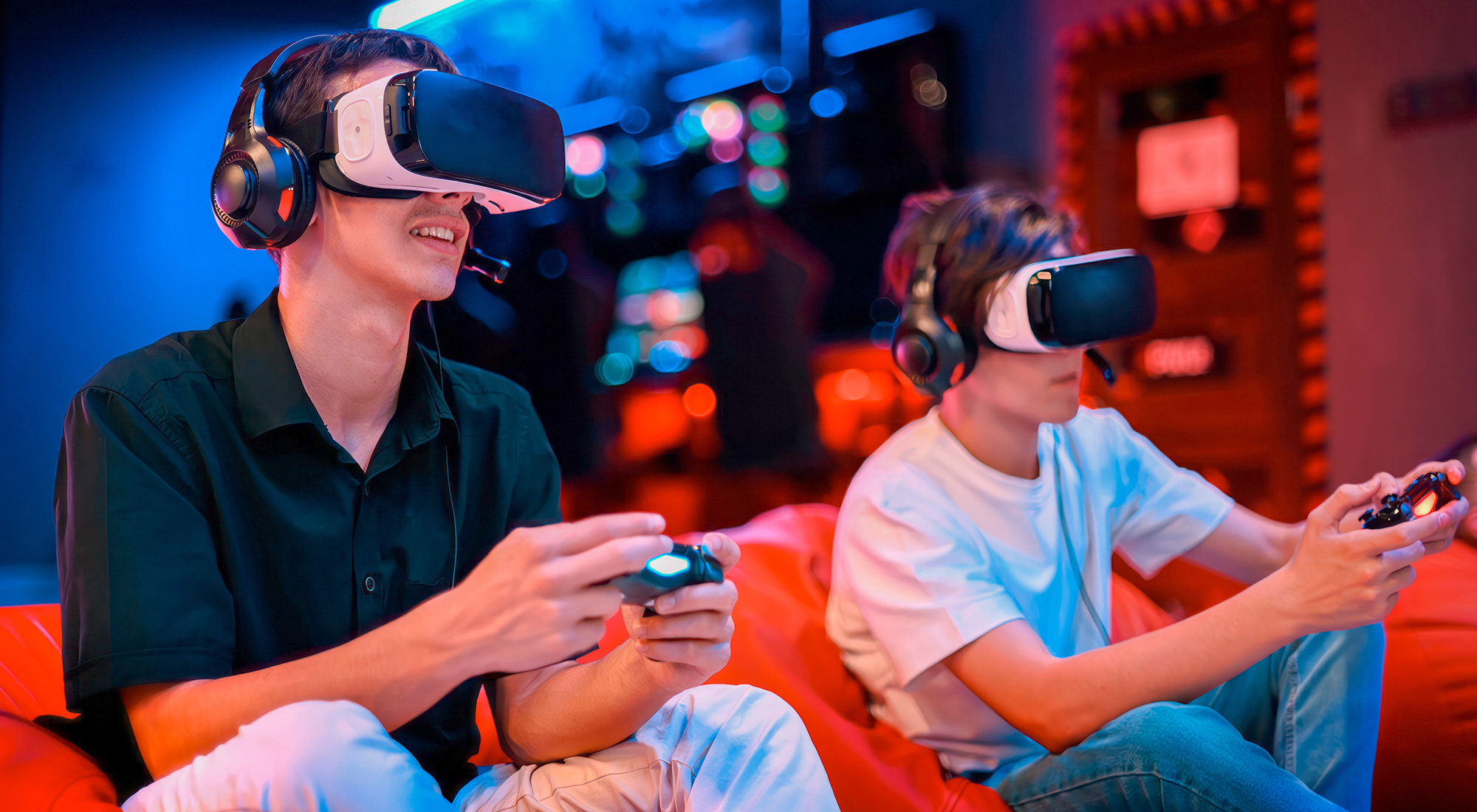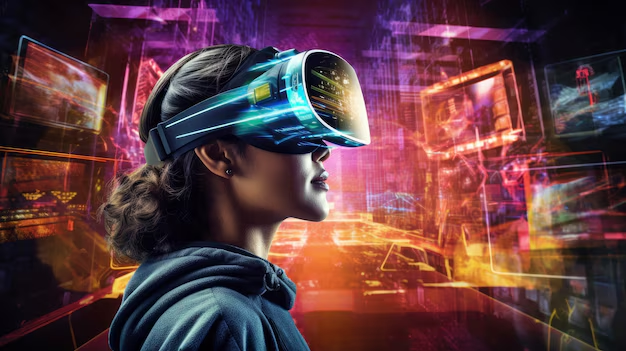Introduction to Augmented Reality

Imagine walking down the street and suddenly seeing a dragon soaring above your head. Or perhaps watching your favorite film character come to life right in your living room. Welcome to the world of augmented reality (AR), where the boundaries between imagination and reality blur seamlessly. AR technology is not just for tech enthusiasts; it’s revolutionizing how we experience entertainment every day. From gaming to sports, films, and live performances, AR is reshaping our engagement with stories and experiences like never before. Let’s dive into this fascinating realm where entertainment takes on new dimensions, allowing us to interact more deeply than ever imagined.
The Evolution of Entertainment Industry with AR
%20Design.webp)
The entertainment industry is undergoing a profound transformation, thanks to augmented reality. This technology bridges the gap between digital and physical worlds. It adds interactive layers that enhance user experiences in ways previously unimaginable.
From virtual concerts to immersive theater productions, AR creates opportunities for storytelling like never before. Audiences can engage with content on a personal level, blurring the lines between spectator and participant.
Video streaming platforms are also leveraging AR features. Imagine watching your favorite show while interacting with live polls or exploring character backgrounds through an overlay. This shift fosters deeper connections between viewers and content creators.
Moreover, film studios are experimenting with AR during production phases too. Filmmakers can visualize scenes more effectively by integrating CGI elements into real environments right from the start. The evolution of entertainment powered by augmented reality reflects a growing desire for innovative engagement in media consumption.
The Impact of AR on Gaming

Augmented Reality has transformed gaming into an immersive experience. Players no longer sit passively in front of a screen. They step into the game world, interacting with virtual elements that blend seamlessly with their surroundings.
Imagine battling dragons in your living room or solving puzzles on the streets of your neighborhood. AR games encourage exploration and creativity like never before. Each play session becomes a unique adventure tailored to individual environments.
Multiplayer experiences have also evolved. Friends can join forces in real-time, regardless of physical location. This aspect fosters community and competition while enhancing social engagement within games.
With advancements in technology, developers are pushing boundaries further. The potential for storytelling expands as players become active participants rather than mere spectators. As AR continues to evolve, it promises to redefine our understanding of gameplay itself.
Enhancing Sports Viewing Experience with AR
Augmented Reality is transforming how fans experience sports. Imagine watching a game from your couch, yet feeling as if you’re in the stadium.
With AR technology, viewers can access live statistics and player information right on their screens. This real-time data enhances understanding and engagement during critical moments of play.
Some platforms offer 3D replays that allow fans to see every angle of a spectacular goal or touchdown. These immersive visuals bring the action closer than ever before.
Moreover, special features like virtual graphics overlaying the field create interactive elements that keep audiences captivated throughout the game.
Fans can even enjoy personalized experiences by choosing specific camera angles or accessing exclusive behind-the-scenes content through their devices.
As AR continues to evolve, it promises an unprecedented way for spectators to connect with their favorite teams and athletes like never before.
Bringing Characters to Life in Film and TV with AR
Augmented Reality is transforming how we experience characters in film and television. It bridges the gap between fiction and reality, creating immersive narratives that captivate audiences.
Imagine watching a favorite movie scene unfold around you. With AR, characters can pop up right in your living room. They interact with the environment, making storytelling more engaging than ever before.
Studios are experimenting with AR to enhance character development. Viewers can now explore backstories or witness pivotal moments from various angles. This multi-dimensional approach deepens emotional connections.
Furthermore, promotional campaigns use AR to bring beloved characters into real-world settings through apps and social media filters. Fans can take selfies alongside their heroes or villains, blurring the lines between fandom and reality.
As technology advances, expect even more innovative ways to engage with characters on screen—making each viewing an unforgettable adventure.
AR in Live Events and Performances
AR is transforming live events and performances in remarkable ways. Imagine attending a concert where holographic artists share the stage with your favorite musicians. This technology creates an immersive experience that pulls audiences deeper into the performance.
Theaters are also embracing augmented reality to enhance storytelling. With AR, scenes can shift dynamically, allowing viewers to interact with characters or environments in real time. This adds layers of depth that traditional productions can’t match.
Festivals and sporting events have begun incorporating AR too. Fans can access interactive content on their devices while enjoying the action live. From player stats to behind-the-scenes footage, this enriches engagement like never before.
As artists explore creative possibilities through augmented experiences, the boundary between reality and imagination blurs further each day. An exciting future awaits as we witness how AR continues to shape our enjoyment of live entertainment.
Challenges and Future Possibilities of AR in Entertainment
Augmented Reality faces several challenges in the entertainment sector. One major hurdle is the need for high-quality hardware. Not everyone has access to top-tier devices, limiting audience engagement.
Another concern involves privacy and data security. As AR technology collects user information to enhance experiences, users may hesitate due to potential breaches.
Moreover, content creation can be resource-intensive. Developers must invest time and money into crafting immersive experiences that stand out in a crowded market.
However, the future of AR in entertainment looks promising. With advancements in technology, we can expect more affordable devices that make AR accessible to all.
Furthermore, as creators experiment with storytelling techniques using augmented elements, unique narratives will emerge. Imagine interactive films where viewers influence outcomes or games blending seamlessly into real-world environments.
These possibilities spark excitement about how our interaction with entertainment may evolve dramatically over the next few years.
Conclusion
The world of entertainment is on the brink of a revolution, and augmented reality is at its forefront. This technology has opened new avenues for creativity and engagement that were once mere fantasies. From immersive gaming experiences to interactive sports viewing, AR is reshaping how we consume content.
As filmmakers harness AR to bring characters to life, audiences are treated to a richer narrative experience. Live events have become more dynamic with AR enhancements, allowing fans to connect in ways they never thought possible. While there are challenges ahead—technology limitations, user acceptance, and ethical considerations—the potential for growth remains vast.
Looking forward, the future possibilities of augmented reality in entertainment seem boundless. It promises not just improvements but entirely new forms of storytelling and interaction. As creators continue experimenting with this medium, one thing is clear: augmented reality is an essential part of reimagining entertainment as we know it today—and tomorrow.









